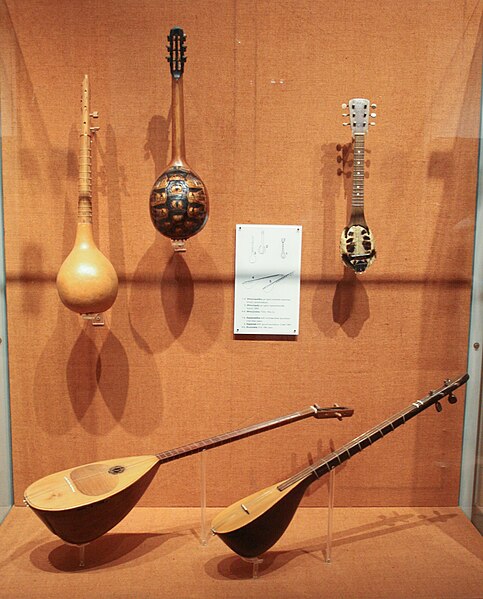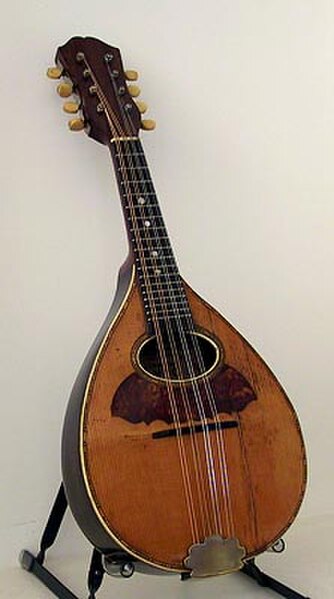The bouzouki is a musical instrument popular in Greece. It is a member of the long-necked lute family, with a round body with a flat top and a long neck with a fretted fingerboard. It has steel strings and is played with a plectrum producing a sharp metallic sound, reminiscent of a mandolin but pitched lower. It is the precursor to the Irish bouzouki, an instrument derived from the Greek bouzouki that is popular in Celtic, English, and North American folk music. There are two main types of Greek bouzouki: the trichordo (three-course) has three pairs of strings and the tetrachordo (four-course) has four pairs of strings. The instrument was brought to Greece in the early 1900s by Greek refugees from Anatolia, and quickly became the central instrument to the rebetiko genre and its music branches. It is now an important element of modern Laïko pop Greek music.
Bouzouki
Bouzouki player in Athens, July 2018
Bouzouki in the Museum of Greek Folk Musical Instruments in Athens
The tambouras of Yannis Makriyannis in the National Historical Museum, Athens
A mandolin is a stringed musical instrument in the lute family and is generally plucked with a pick. It most commonly has four courses of doubled strings tuned in unison, thus giving a total of eight strings. A variety of string types are used, with steel strings being the most common and usually the least expensive. The courses are typically tuned in an interval of perfect fifths, with the same tuning as a violin. Also, like the violin, it is the soprano member of a family that includes the mandola, octave mandolin, mandocello and mandobass.
Archtop mandolin
In 1787, Luigi Bassi played the role of Don Giovanni in Mozart's opera, serenading a woman with a mandolin. This used to be the common picture of the mandolin, an obscure instrument of romance in the hands of a Spanish nobleman.
Clockwise from top left: 1920 Gibson F-4 mandolin; 1917 Gibson H-2 mandola; 1929 Gibson mando-bass; and 1924 Gibson K-4 mandocello from Gregg Miner's collection.
Piccolo mandolin








